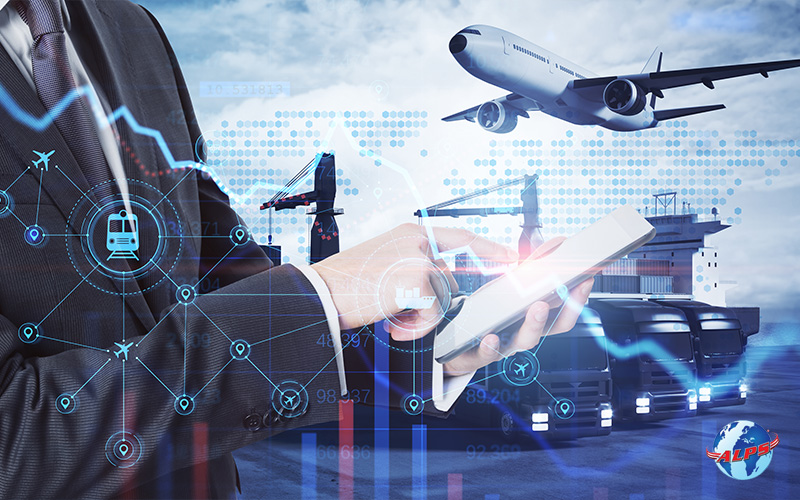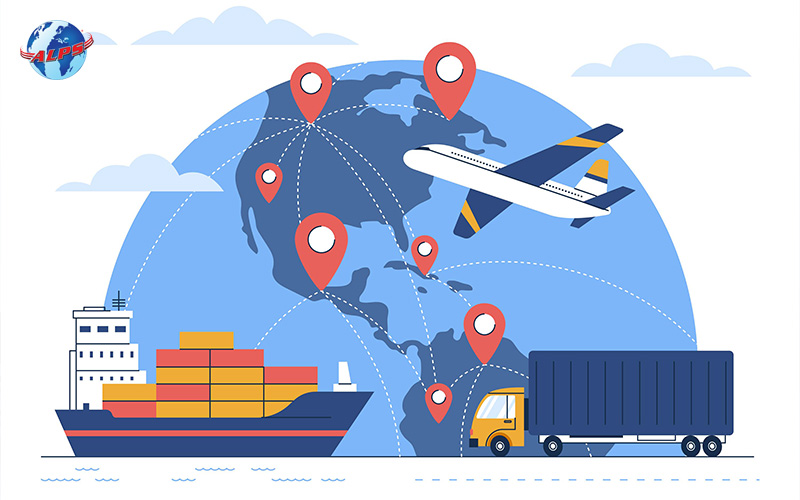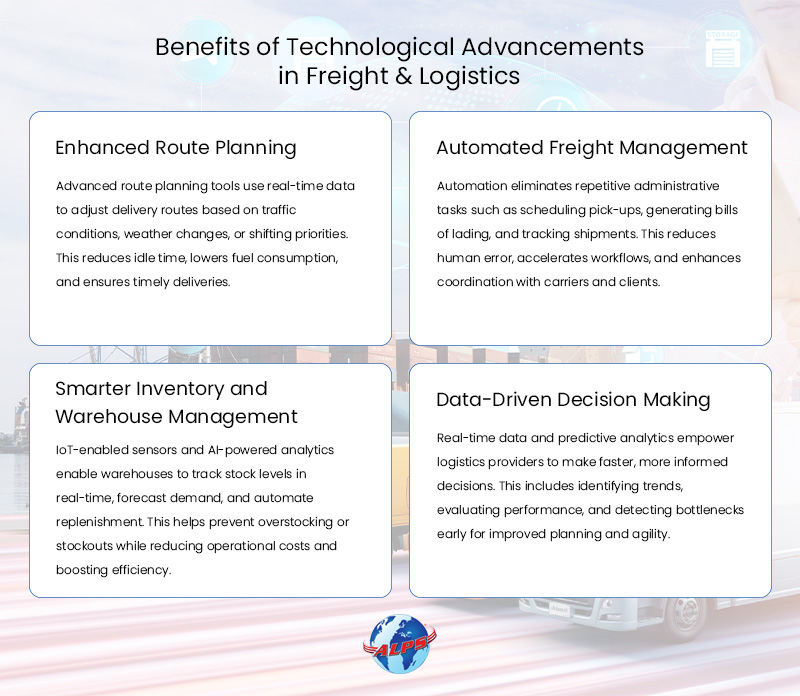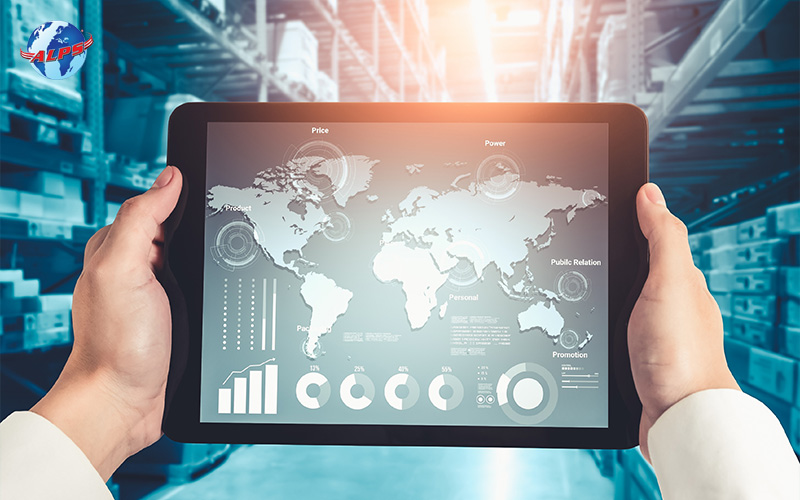The freight and logistics sector is no stranger to complexity. In Singapore and across the globe, logistics operators face mounting challenges—rising fuel costs, tight delivery schedules, workforce shortages, and growing customer expectations for real-time tracking and faster fulfilment. Add to that the ongoing need for compliance, supply chain visibility, and minimising operational downtime, and it’s clear the traditional way of doing things is no longer sustainable.
This is where automation solutions come into play. By integrating advanced technologies such as IoT, artificial intelligence, and blockchain, logistics companies can transform their operations to become more agile, efficient, and customer-centric. Automation not only reduces manual workloads and errors but also helps businesses make data-driven decisions, respond faster to disruptions, and scale sustainably.
In the sections ahead, we’ll dive into the role of automation solutions in modern freight and logistics operations. You’ll:
- Discover how innovations like IoT, AI, machine learning, and blockchain are changing the way freight moves and is managed.
- See how freight service providers are using automation solutions to improve route optimisation, streamline warehouses, and boost supply chain transparency.
- Learn how these technologies lead to faster deliveries, reduced costs, increased accuracy, and better customer service.
- Explore emerging technologies like autonomous trucks and drones, and understand the challenges and opportunities they present.
By the end of this guide, you’ll have a clear understanding of how automation solutions are revolutionising the freight shipping industry and how your business can leverage them to stay competitive, efficient, and future-ready.
Internet of Things (IoT): Turning Freight Into Smart Freight

Let’s start with one of the most transformative developments in logistics today: the Internet of Things (IoT). As freight networks become increasingly data-driven, IoT is laying the groundwork for smarter, more responsive operations. At its core, IoT turns traditional freight into smart freight that is capable of monitoring itself, reporting its condition, and even triggering next steps autonomously through a connected automation solution.
Here’s how.
1. Real-Time Tracking and Visibility
IoT devices offer live updates on shipment location, condition, and estimated arrival times. This real-time visibility empowers logistics teams to proactively manage delays, reroute deliveries, and keep customers informed. Combined with an automation solution, this data can trigger alerts, update dashboards, and even notify stakeholders the moment something goes off course, all without human intervention.
2. Predictive Maintenance
IoT sensors are not limited to air freight or sea cargo shipping; they’re also changing fleet management. When installed in delivery trucks or handling equipment, these sensors collect data on engine health, tyre pressure, and system performance. Rather than waiting for breakdowns, predictive algorithms can detect early warning signs and schedule maintenance before issues escalate. By integrating this with a robust automation solution, companies can automate service scheduling and reduce costly downtime.
3. Improved Route Optimisation
Traffic congestion, road closures, and weather changes are constant challenges in freight delivery. IoT helps address these by enabling dynamic route optimisation. Smart sensors feed data into mapping tools that automatically adjust routes in real time, reducing travel time and fuel consumption. A well-integrated automation system can roll out route changes instantly across an entire fleet, increasing responsiveness without the need for manual coordination.
4. Enhanced Security and Transparency
IoT also enhances cargo security through tamper sensors, GPS tracking, and environmental monitoring. Each air and sea freight can be continuously monitored for temperature shifts, unauthorised access, or route deviations. These security features generate a transparent, tamper-proof log accessible through a central automation solution, ensuring accountability at every stage of transit.
In short, IoT doesn’t just collect data, it empowers logistics operators to act on it. When combined with a smart automation solution, it enables faster decisions, fewer errors, and greater supply chain resilience.
Artificial Intelligence and Machine Learning: Revolutionising Decision Making

While IoT provides the eyes and ears of the supply chain, Artificial Intelligence (AI) and Machine Learning (ML) serve as its brain, analysing vast datasets and transforming them into actionable decisions. Together, they are pushing the boundaries of what an automation solution can achieve in logistics and freight management.
1. Route Optimisation
AI algorithms process vast datasets—traffic flow, road conditions, weather forecasts, and delivery urgency—to determine the most efficient route for each shipment. Unlike traditional route planning, AI adapts in real time, helping logistics companies avoid bottlenecks and minimise delays. When built into an end-to-end automation solution, optimised routes can be rolled out instantly across fleets, ensuring timely and cost-effective deliveries.
2. Demand Forecasting
Machine learning models identify patterns in historical sales, seasonal trends, and market behaviour to predict future demand. Accurate forecasting helps companies avoid overstocking or under-resourcing their transport and warehousing operations. A smart automation solution can use these forecasts to automatically adjust procurement, staffing, and inventory levels, streamlining operations from the ground up.
3. Automation of Warehouse Operations
AI-powered robotics and vision systems are transforming how warehouses function. From autonomous mobile robots that transport goods to intelligent sorting machines that handle complex orders, AI enables automation beyond static workflows. These technologies reduce manual labour, increase throughput, and improve accuracy, making warehouses faster and more reliable.
4. Customer Experience Enhancement
AI also plays a key role in improving customer service. Chatbots and virtual assistants can provide instant updates on shipment status, respond to queries 24/7, and escalate issues when needed. By integrating these tools into a logistics company’s automation solution, businesses can deliver a consistent, responsive customer experience without overwhelming human support teams.
From operations to customer engagement, AI and ML are redefining what’s possible in logistics, bringing new intelligence to every node in the supply chain.
Blockchain: Strengthening Supply Chain Integrity

In an industry where multiple stakeholders, tight schedules, and vast geographical distances are the norm, trust and verification are more than just operational concerns—they’re business-critical. That’s where blockchain steps in as a game-changer. Unlike other technologies that focus on speed or automation, blockchain is all about accountability and integrity, ensuring every transaction, record, and handoff in the supply chain is accurate, secure, and verifiable.
From operations to customer engagement, AI and ML are redefining what’s possible in logistics, bringing new intelligence to every node in the supply chain.
1. Improved Transparency
Blockchain enables the creation of a shared ledger that all authorised parties can access but no single entity controls. This decentralised system ensures that every stage of the shipment process, from dispatch to delivery, is documented in a way that cannot be altered retroactively. The result? Total visibility and traceability of goods, which is especially vital in highly regulated or sensitive sectors.
2. Enhanced Security
With cryptographic protocols embedded at its core, blockchain makes it virtually impossible to alter records without consensus from the network. This tamper-proof structure protects against fraud and unauthorised changes, giving logistics providers and clients a more secure framework to operate within. It also builds a stronger foundation of trust among stakeholders.
3. Streamlined Payments and Invoicing
Administrative inefficiencies often plague logistics operations, especially when it comes to invoicing and settlements. Blockchain’s smart contracts automate these processes, triggering payments or approvals once predefined conditions are met. This not only reduces the chance of human error but also speeds up cash flow cycles and reduces reliance on manual reconciliation.
4. Faster Customs and Compliance Processes
Blockchain can also facilitate faster cross-border movement by digitising compliance documents and making them readily accessible to customs authorities. This speeds up verification and lowers the chances of miscommunication or delay, making international logistics smoother and more efficient.
By embedding transparency and security at every level, blockchain is redefining how freight moves, not just physically, but digitally.
Benefits of the Technological Advancements: Improving Operational Efficiency

With the integration of modern technologies like IoT, AI, and blockchain, freight and logistics operations are undergoing a transformation that goes far beyond digitisation. These advancements aren’t just about keeping up with trends, they’re delivering measurable improvements in efficiency, accuracy, and cost control.
Let’s explore how these developments are reshaping operational performance.
1. Enhanced Route Planning
Advanced route planning tools, powered by real-time data analytics, enable logistics operators to adapt routes based on changing road conditions, weather patterns, or delivery priorities. This reduces idle time, lowers fuel consumption, and ensures timely deliveries. When used as part of a broader automation solution, these systems minimise manual input while maximising responsiveness and flexibility in daily operations.
2. Automated Freight Management
Modern automation solutions eliminate the need for repetitive administrative tasks in freight management. From scheduling pick-ups and dispatches to generating bills of lading and tracking shipments, automation reduces the likelihood of human error and speeds up workflows. These systems not only streamline internal processes but also enhance coordination with external stakeholders like carriers and clients.
3. Improved Inventory and Warehouse Management
Warehouse operations are becoming more intelligent and adaptive thanks to the use of IoT-enabled sensors and AI-powered analytics. Automated inventory systems can track stock levels in real-time, forecast demand, and trigger replenishments proactively. These automation solutions help avoid common inventory issues such as overstocking or stockouts, ultimately boosting warehouse throughput and reducing overhead costs.
4. Data-Driven Decision Making
Access to real-time data and predictive analytics empowers logistics providers to make smarter, faster decisions. Whether it’s evaluating carrier performance, forecasting demand, or identifying bottlenecks, data-driven strategies enhance agility and long-term planning. Automation not only collects and analyses the data but also integrates it into dashboards and systems for actionable use.
By embracing these technologies and embedding the right automation solutions, freight and logistics providers are better positioned to operate at peak efficiency, meeting customer expectations while controlling costs and scaling sustainably.
Autonomous Vehicles and Drones: The Future of Freight Delivery
While automation in freight has traditionally focused on optimising internal processes, the frontier is now shifting towards transforming how goods are physically moved. The logistics industry is now looking toward autonomous vehicles and drones as the next major leap in automation.
1. Autonomous Trucks and Vehicles
Self-driving trucks are rapidly evolving, capable of operating over long distances with minimal human input. These vehicles offer more consistent transit schedules and help reduce labour costs, making them a viable automation solution for long-haul freight delivery. Equipped with advanced sensors, AI-driven navigation, and real-time data processing, autonomous trucks can optimise driving behaviour, minimise idle time, and increase fleet utilisation.
2. Drones for Last-Mile Delivery
Drones, meanwhile, are revolutionising last-mile logistics. Especially in densely populated cities or remote areas, drones can bypass road congestion and reduce delivery times dramatically. Lightweight and energy-efficient, they offer a cost-effective option for delivering smaller parcels quickly and with minimal environmental impact.
3. Reduced Human Error
By eliminating driver fatigue and manual navigation, autonomous systems significantly reduce the chances of accidents and delivery mishaps. This not only enhances safety but also ensures a higher standard of reliability and service.
4. Regulatory and Infrastructure Challenges
Despite their promise, widespread adoption faces considerable barriers. Governments and logistics companies must navigate evolving regulations, build supportive infrastructure, and address public safety concerns before these technologies become mainstream. However, the momentum suggests it’s only a matter of time.
In summary, autonomous vehicles and drones represent a bold leap forward in freight delivery. While there are still regulatory and infrastructure hurdles to clear, their potential to enhance speed, reduce costs, and minimise human error makes them a powerful automation solution in the evolving logistics landscape.
Frequently Asked Questions
1. How can logistics companies in Singapore start adopting these technologies without large upfront investments?
Many technology providers offer scalable, modular solutions that allow logistics companies to adopt new technologies in phases. Companies can start with small pilot projects, such as installing IoT devices for tracking or using AI for route optimisation, before expanding their investments based on clear ROI outcomes.
2. What are the biggest challenges logistics companies face when implementing new technologies?
Common challenges include high initial integration costs, employee training needs, data security concerns, and ensuring that new technologies are compatible with existing systems. Careful planning, choosing the right technology partners, and investing in staff training are key steps to overcoming these hurdles.
3. Are these technological advancements suitable only for large logistics companies?
No. Many technological solutions today are designed to be flexible and cost-effective for businesses of all sizes. SMEs in the freight industry can particularly benefit from tools like AI-based demand forecasting, IoT-enabled tracking, and blockchain for secure documentation, helping them compete more effectively with larger players.
Partner with ALPS Global Logistics for Smarter Freight Solutions
The freight and logistics industry is undeniably being reshaped by modern technologies such as IoT, artificial intelligence, blockchain, and autonomous delivery systems. These innovations serve as powerful automation solutions that enhance operational efficiency, improve supply chain transparency, and elevate customer service standards. While challenges remain—ranging from integration costs to regulatory frameworks—the benefits far outweigh the hurdles for companies ready to embrace digital transformation. By strategically adopting these technologies, logistics providers can optimise their processes, reduce errors, and stay competitive in a fast-evolving market.
For businesses in Singapore looking to future-proof their freight operations and leverage the latest automation solutions, partnering with a trusted expert is key. ALPS Global Logistics offers comprehensive, technology-driven logistics services tailored to meet your specific needs. Reach out today to discover how ALPS can help you streamline your supply chain, improve delivery performance, and unlock new levels of operational excellence.












